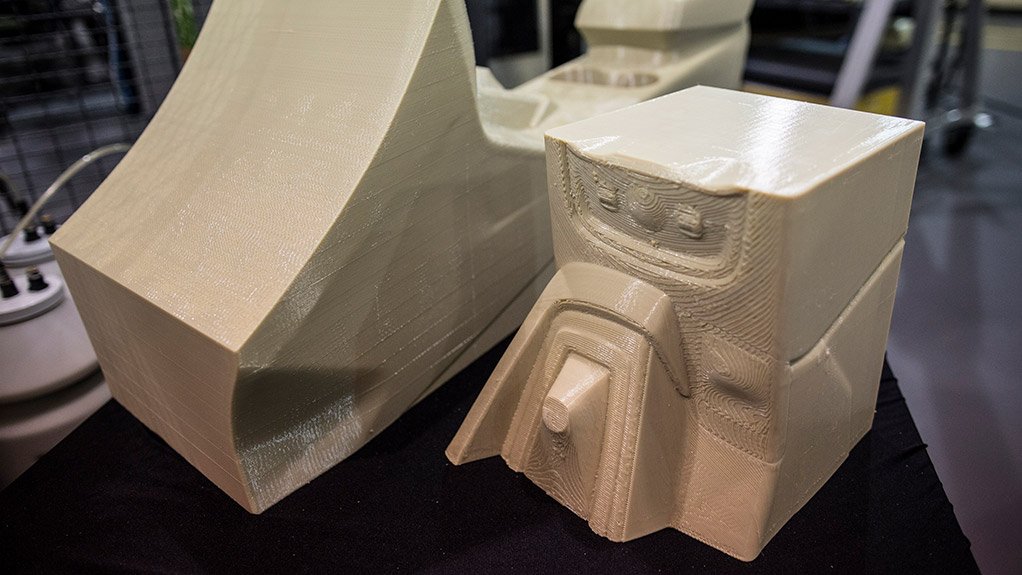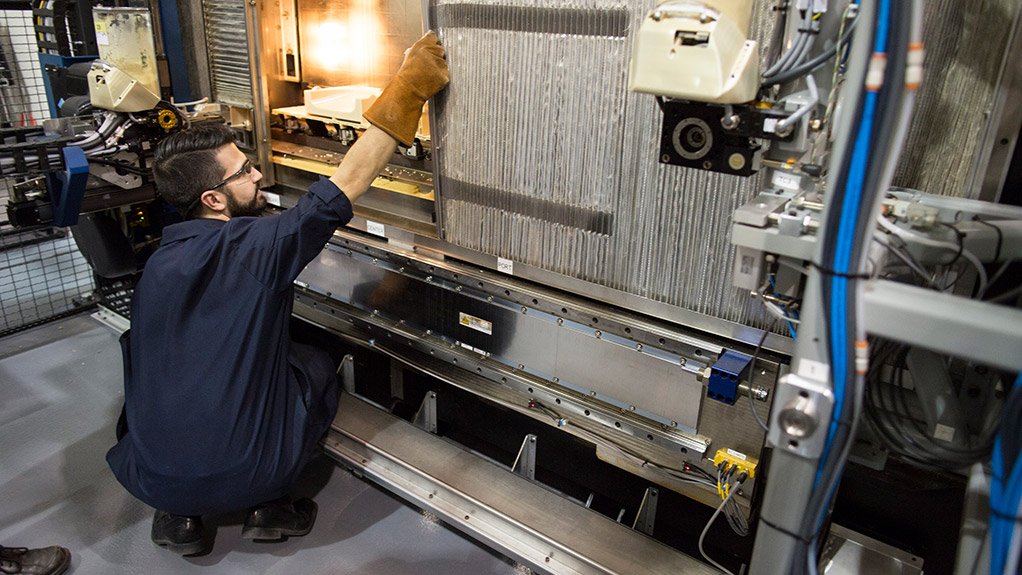Ford Tests Large Scale 3D Printing with Light-Weighting and Personalization in Mind
This article has been supplied as a media statement and is not written by Creamer Media. It may be available only for a limited time on this website.
- Ford Motor Company is testing 3D printing of large scale car parts using the Stratasys Infinite Build 3D printer
- Ford is the first automotive company to trial this technology with Stratasys, and is currently exploring potential applications for future production vehicles, like Ford Performance vehicles or for personalized car parts
Increasingly affordable and efficient, 3D printing large car parts, like car spoilers, could benefit both Ford and consumers. Parts that are printed can be lighter in weight than their traditionally manufactured counterparts, and may help improve fuel efficiency
Ford Motor Company is exploring how large one-piece auto parts, like car spoilers, could be printed for prototyping and future production vehicles, as the first automaker to pilot the Stratasys Infinite Build 3D printer.
Capable of printing car parts of practically any shape or length, the Stratasys Infinite Build system could be a breakthrough for vehicle manufacturing, providing a more efficient and affordable way to produce tooling, prototype parts, or components at low volumes, like Ford Performance vehicles, or for personalized car parts.
“With the Infinite Build technology, we are now able to print large tools, fixtures, and components, making us more nimble in design iterations,” said Ellen Lee, Ford technical leader for additive manufacturing research. “We’re excited to have early access to Stratasys’ new technology in order to help steer the development of large scale printing for automotive applications and requirements.”
The new 3D print system is located at Ford’s Research and Innovation Center in Dearborn.
An emerging technology for manufacturing
As 3D printing becomes increasingly efficient and affordable, companies are employing this emerging technology for manufacturing applications in everything from aerospace, to education, to medicine. Wider adoption in 3D printing has been driven by recent technology advances, new areas of application and government support, according to Global Industry Analysts Inc. By 2020, the global market for 3D printing is expected to reach $9.6 billion, the organization reported.
In the future, 3D printing could have immense benefits for automotive production, including the ability to produce lighter-weight parts, which may help improve fuel efficiency. A 3D-printed spoiler, for instance, may weigh less than half of its metal-cast equivalent.
Additionally, 3D printing is a more cost-efficient way to produce parts only needed at low volumes, like prototypes and specialized parts for racecars. Further, Ford also may use the technology to make larger printed tooling and fixtures as well as personalized components for customers.
How it works
Specifications for the part are transferred from the computer-aided design program to the printer’s computer, which analyzes the design. Then, the device goes to work, printing one layer of material at a time – in this case, plastic – and then gradually stacking the layers into a finished 3D object.
When the system detects that the raw material or supply material canister is empty, a robotic arm automatically replaces it with a full canister. This allows the printer to operate for hours or days while unattended.
Benefits of 3D printing
Though 3D printing isn’t yet fast enough for high-volume production manufacturing, it is a more cost-efficient way to produce parts only needed at low volumes, like prototypes and specialized parts for racecars. In addition, when not limited by the constraints of mass production processes, components can be designed to function more efficiently.
Using traditional methods, an engineer would create a computer model of the part and wait for months for prototype tooling to be produced. With 3D printing, Ford can print the same part in days at a significantly reduced cost. For example, a prototype for a new intake manifold could be produced over a couple of days as opposed to several months, at an order of magnitude lower cost.
Comments
Press Office
Announcements
What's On
Subscribe to improve your user experience...
Option 1 (equivalent of R125 a month):
Receive a weekly copy of Creamer Media's Engineering News & Mining Weekly magazine
(print copy for those in South Africa and e-magazine for those outside of South Africa)
Receive daily email newsletters
Access to full search results
Access archive of magazine back copies
Access to Projects in Progress
Access to ONE Research Report of your choice in PDF format
Option 2 (equivalent of R375 a month):
All benefits from Option 1
PLUS
Access to Creamer Media's Research Channel Africa for ALL Research Reports, in PDF format, on various industrial and mining sectors
including Electricity; Water; Energy Transition; Hydrogen; Roads, Rail and Ports; Coal; Gold; Platinum; Battery Metals; etc.
Already a subscriber?
Forgotten your password?
Receive weekly copy of Creamer Media's Engineering News & Mining Weekly magazine (print copy for those in South Africa and e-magazine for those outside of South Africa)
➕
Recieve daily email newsletters
➕
Access to full search results
➕
Access archive of magazine back copies
➕
Access to Projects in Progress
➕
Access to ONE Research Report of your choice in PDF format
RESEARCH CHANNEL AFRICA
R4500 (equivalent of R375 a month)
SUBSCRIBEAll benefits from Option 1
➕
Access to Creamer Media's Research Channel Africa for ALL Research Reports on various industrial and mining sectors, in PDF format, including on:
Electricity
➕
Water
➕
Energy Transition
➕
Hydrogen
➕
Roads, Rail and Ports
➕
Coal
➕
Gold
➕
Platinum
➕
Battery Metals
➕
etc.
Receive all benefits from Option 1 or Option 2 delivered to numerous people at your company
➕
Multiple User names and Passwords for simultaneous log-ins
➕
Intranet integration access to all in your organisation























